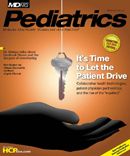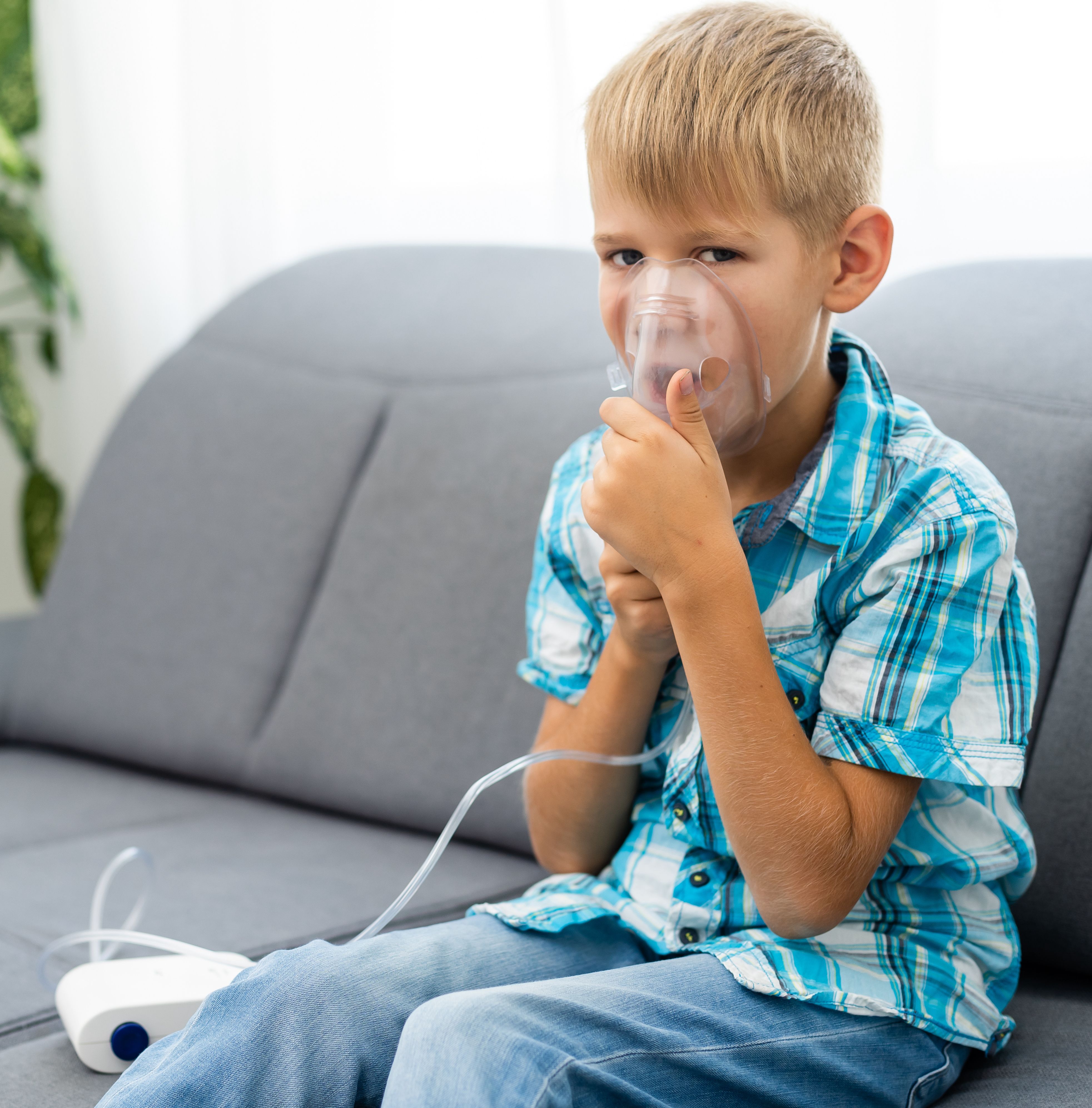Publication
Article
MDNG Pediatrics
The Net Guide: Asthma
The Educated Patient™AAAAI: Just For Kids
Young patients with asthma can visit this site from the American Academy of Allergy, Asthma, and Immunology (AAAAI) to access games, puzzles, videos, and tools that can help them learn to better manage allergies and asthma. Featured resources include a link to a video in which two characters, Tim and Moby, explain how the body reacts to an asthma attack; a game that lets kids find hidden asthma and allergy triggers that might be contained in a classroom; a coloring book featuring superheroes like Dr. Al Lergiset, Annie Histamine, Buster Bronchodilasaurus, and Duel Actions; and asthma-focused quizzes. Parents can visit the site to order storybooks tailored specifically for children with asthma and allergies.
Link Code: k8322
Children with Allergies & Asthma
Among the many resources offered at this site for parents of children with asthma is a series of handouts (downloadable in PDF format) developed by the American Academy of Pediatrics Section on Allergy and Immunology that focus on the diagnosis and management of asthma, covering both non-pharmacologic and pharmacologic approaches. Parents can also purchase “Asthma and Your Child,” a brochure designed to help recognize the symptoms and triggers of attacks; order “Students with Chronic Health Conditions: Guidance for Families, Schools, and Students,” a brochure that gives advice for parents, schools, students, and pediatricians to work together to create a safe and supportive place for students; download the “Emergency Information Form for Children With Special Needs;” or purchase books focusing on asthma management.
Link Code: k8323
Medical WebsitesGuidelines for the Diagnosis and Management of Asthma
Visit this site to download the EPR 3 Guidelines on Asthma, which were developed by an expert panel using the 1997 EPR 2 guidelines and the 2004 update of EPR 2 as the framework. The guidelines center on four “essential components” of asthma care: assessment and monitoring, patient education, control of factors contributing to asthma severity, and pharmacologic treatment. Also included is a link to an article describing changes that have been made to the document since it was originally posted in August 2007. In the guidelines, the treatment of asthma is divided into four categories: general treatment, and treatment specified for children ages 0-4 and 5-11 years, patients 12 years and older, and children with special situations.
Link Code: k8314
Online CMEAsthmaCredits: 0.25
Fee: None
Expires: January 15, 2012
This case-based activity will identify key points in the patient history pertinent to assessing patients with asthma; discuss the importance of the asthma control test; and explain the use of step-up therapy in the management of asthma. Included as part of the course is related reading material from the Cleveland Clinic Disease Management Project and the Cleveland Clinic Journal of Medicine.
Link Code: k8333
Severe Asthma Online MonographCredits: 0.50
Fee: None
Expires: May 7, 2012
Multimedia: None
Designed to “present an evidence-based review of research on more severe asthma disease and analyze treatment options for these patients,” this educational program consists of three segments: “Asthma: A Complex Heterogeneous Disease,” “Severe Asthma: Definitions and Characteristics,” and “Treatment Options for Severe Asthma.” The three discussions focus on the biologic and pathophysi-ologic understandings of asthma, characteristics and classification of asthma, and treatment strategies.
Link Code: k8334
Credits: 2.00
Fee: $40 for AAP members/$48 for non-members
Expires: May 11, 2013
Multimedia: None
This educational offering from the American Academy of Pediatrics’ Pediatrics Learning Center discusses accessories and gadgets that are commonly used to treat and manage asthma in children, as well as the appropriate inhaled delivery systems for patients of different ages and maturity levels. Participants will also learn how to instruct pediatric patients on the proper use of the metered dose inhaler, dry powder inhaler, spacer, nebulizer, and peak flow meter.
Link Code: k8335
eAbstractsDaily Mood, Shortness of Breath, and Lung Function in Asthma: Concurrent and Prospective AssociationsJournal: Journal of Psychosomatic Research (October 2010)
Authors: Ritz T, Rosenfield D, DeWilde S, Steptoe A
Purpose: To examine “concurrent and prospective associations between daily mood, shortness of breath, and lung function,” and to study “between-individual variability and stability of concurrent associations across different times of the day,” comparing asthma patients with healthy controls.
Results: Researchers found that the relationship between normal mood variations and lung function “is highly variable across individuals and times of the day, limiting the predictive value of average group associations.” They did, however, conclude that shortness of breath is predictive of future lung function decline in asthma.
Link Code: k8354
Disparities in Asthma Medication Dispensing Patterns: the Case of Pediatric Asthma in Puerto RicoJournal: Journal of Asthma (September 2010)
Authors: Vila D, Rand C, Cabana M, et al
Purpose: To examine, using island-wide medical claims data, the extent to which differences between the private and public health care sectors affect medication dispensing and health care utilization among asthmatic children.
Results: Researchers found that significantly more controller and quick-relief medications were dispensed to private insurance families compared with public insurance families; the dispensing of inhaled corticosteroids and leukotriene modifiers and cromolyn was dramatically higher in the private sector, while emergency room use was significantly increased among public insurance children (51.7% vs. 13.8%). These results suggest that “under-treatment of public insured children may substantially contribute to increased asthma morbidity in this population as evidenced by significantly higher rates of ED visits.”
Link Code: k8355
Clinical TrialsAsthma Education Using Child Life Services and an Asthma-based Computer GameStudy Type: Interventional
Age/Gender Requirements: 6-16 years (male/female)
Sponsor: Winthrop University Hospital
Purpose: To determine whether implementing an educational intervention—in which asthma patients interact with a child life specialist and use an asthma-based computer game—in the pediatric ED can influence children’s and caregivers’ knowledge and understanding of the disease process and treatment, and to “improve asthma self-management and decrease morbidity by decreasing ED use and hospitalization.”
Link Code: k8363
A Computerized Asthma Management System in the Pediatric Emergency DepartmentStudy Type: Interventional
Age/Gender Requirements: 2-28 years (male/female)
Sponsor: Vanderbilt University
Purpose: This study, which is not yet open for recruitment, seeks to determine whether an “automatic, computerized reminder system for detecting asthma patients in the pediatric ED will increase guideline adherence compared to paper-based guidelines,” and lead to improved patient outcomes.
Link Code: k8364
Telemedicine Education for Rural Children with AsthmaStudy Type: Interventional
Age/Gender Requirements: 7-17 years (male/female)
Sponsor: Arkansas Children’s Hospital Research Institute
Purpose: This interactive school-based education program for rural low-income, minority children with asthma, their caregivers, and school nurses in the Delta region of Arkansas has two goals: to examine changes in asthma symptom control and other outcomes such as activity levels and family/child emotional health in the intervention group compared to a usual care group, and to observe changes in asthma knowledge, self-efficacy, and quality of life in the intervention participants and their caregivers compared to a usual care group.
Link Code: k8365
PodcastsUsing an Asthma InhalerPart of the “A Minute for Kids” series of audio files provided by the American Academy of Pediatrics, this podcast focuses on inhalers, advising young asthma patients to “keep track of the number of doses used on the inhaler, and throw away the inhaler once you’ve reached its maximum number of doses, even if it still sprays.”
Link Code: k83332
Pharma Focus
Symbicort (budesonide/formoterol fumarate dihydrate)
Clinical TrialsTrial on the Effect of Budesonide/Formoterol and Inhaled Budesonide Alone on Exercise-induced AsthmaStudy Type: Interventional
Age/Gender Requirements: 12-50 years (male/female)
Sponsor: Children’s Hospital Boston
Purpose: To ascertain whether the combination asthma medication Symbicort “is more effective than budesonide alone in controlling exercise induced asthma.” The study’s investigators hypothesize that children and adults who suffer from asthma and exercise-induced asthma, “there will be less decline in lung function associated with exercise when they receive the study medication.”
Link Code: k8366
eAbstractsOnce- vs Twice-daily budesonide/formoterol in 6- to 15-year-old Patients with Stable AsthmaJournal: Pediatrics (September 2010)
Authors: Eid N, Noonan M, Chipps B, et al
Purpose: To assess the efficacy and tolerability of “once-daily budesonide/formoterol pressurized me¬tered-dose inhaler (pMDI) versus budesonide pMDI (primary) and twice-daily budesonide/formoterol (secondary) in children/adolescents with asthma stabilized with twice-daily budesonide/formoterol.”
Results: The treatments were well tolerated by patients with mild/moderate persistent asthma, and “there was no evident safety benefit for once- versus twice-daily dosing.” The researchers found that “once-daily budesonide/formoterol demonstrated significantly better efficacy than once-daily budesonide for most pulmonary-function variables,” and twice-daily budesonide/formoterol mainte-nance therapy was more effective for patients than stepping down to once-daily dosing.
Link Code: k8356





